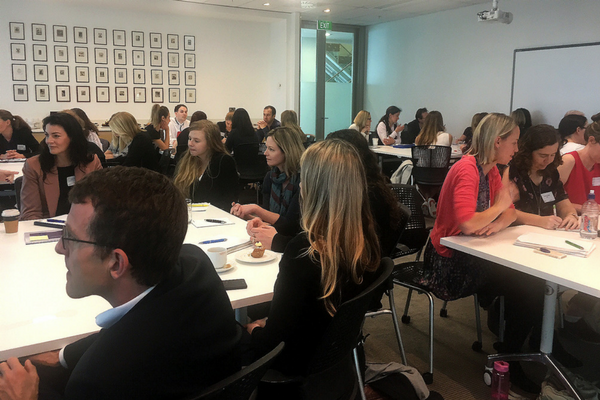Brands have the power to make the world better

Sustainability needs to be infectious and feel good. Not nostalgic. It needs to be about problem solving, with humans as the problem solvers, not the problem.
This is how companies need to reflect sustainability in their brand story and advertising, according to J. Walter Thompson’s Head of Planning, Jacqueline Smart.
Jacqueline spoke to over 80 Sustainable Business Council (SBC) members at a workshop mid-September, offering her insights into the types of codes and metaphors used to describe sustainability in brand narratives.
I also introduced the World Business Council for Sustainable Development’s Good Life 2.0 Playbook, which is designed for brand and marketing teams and their agencies, to help inspire customers to live a more sustainable life.
Branding for good
Using an anthropological lens, Jacqueline Smart identified three main codes that apply to brand narratives about sustainability – residual, dominant and emerging.
The main observations and tips she presented were:
* Which code your brand story fits with will change and evolve. You cannot be anachronistic about sustainability, because it will be called out by consumers.
* If your advertising uses residual codes (the codes with receding meaning that are becoming less relevant and out of step with culture, such as the colour green for sustainability) then you’re at risk of your brand losing meaning.
* You’ll know you’re in a residual code when you experience pushback, such as your ads being labelled a “greenwash”, or if your marketing is seen as pointing a finger at consumers and making them feel bad – they’ll turn their backs on you.
* Dominant codes go beyond environmental issues – they include social equity as a goal of sustainability too. They’re about the interdependence between humans and nature and also interconnection between us as humans. The main representations of this code are advertising is mutualism, interconnectedness, stewardship, sustainable lifestyles and conscious consumption.
* Brands and companies needs consumers just as much as consumers need us – so think about how you can work hand-in-hand with your consumers so that you both benefit and it’s easy and possible to be sustainable.
* It’s hard to identify what emerging codes are with any area, but particularly so with sustainability. What’s just coming through now are emerging codes of “adaptive intelligence” – the interconnectedness of nature, humans and the marketplace.
* When these emerging codes are used, the brand story isn’t specifically about sustainability, because they demonstrate that sustainability is already part of the brand’s DNA. This creates a base that in every touchpoint you can engage with consumers on sustainability, because it’s so core to that brand.
* For brands that have advanced to using emerging codes, effortless user experience becomes essential to sustainability. Service becomes the important product to sell just as much as a tangible product.
Jacqueline’s final advice to the SBC member businesses was to keep checking their brand story –watch that you don’t slip from dominant to residual, keep thinking about what the emerging codes could be, and when you do decide to shift the codes used in your marketing narratives, make sure you can do this authentically.
The Good Life Playbook
Emerging codes is also a key theme in The Good Life 2.0 Playbook, which starts with big question, Can marketers sell a better world?
The problem that the Playbook aims to address is that, as millions of people around the world enter the ranks of the middle class every month, they’re aspiring to a lifestyle that is no longer sustainable. Most people will not be able to live well in these conditions.
The Playbook is absolutely not designed to help marketers sell sustainability, or a sustainable product, but instead aims to give marketers some simple prompts and ideas on how to shift the aspirational landscape of brand communications towards a world that just happens to be more sustainable.
It can be a starting point for a completely different conversation with anyone, whether that be someone in marketing, R&D, or the CEO, about how there’s a new global vision of “the good life” and the Playbook can help companies re-imagine their brand in this emergent reality. And the business benefit will be that meaningful brands that create and promote the Good Life 2.0 will be rewarded for it by their customers.
Using citizen-generated imagery – mostly from Instagram – that depicts a new version of success, the Playbook distils four elements – or aspirations – that marketers can use in the backdrop of their brand communications: Home and family, time to slow down, the journey matters, and work and life in balance.
In 2018, the Sustainable Business Council will work with members and partners on a New Zealand version of the Good Life 2.0 Playbook, and keep talking with members about what codes on sustainability are starting to emerge in NZ companies’ brand stories.
Alison Herft, Member Engagement Manager
Contact: Alison Herft, Member Engagement Manager
Phone: +64274559104
Email:
